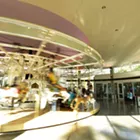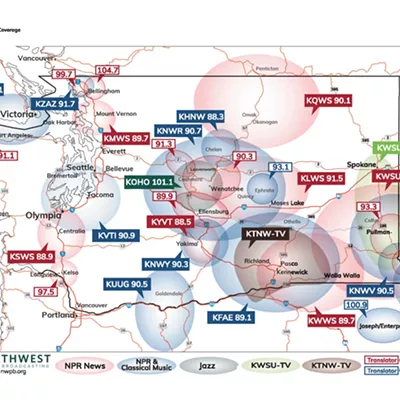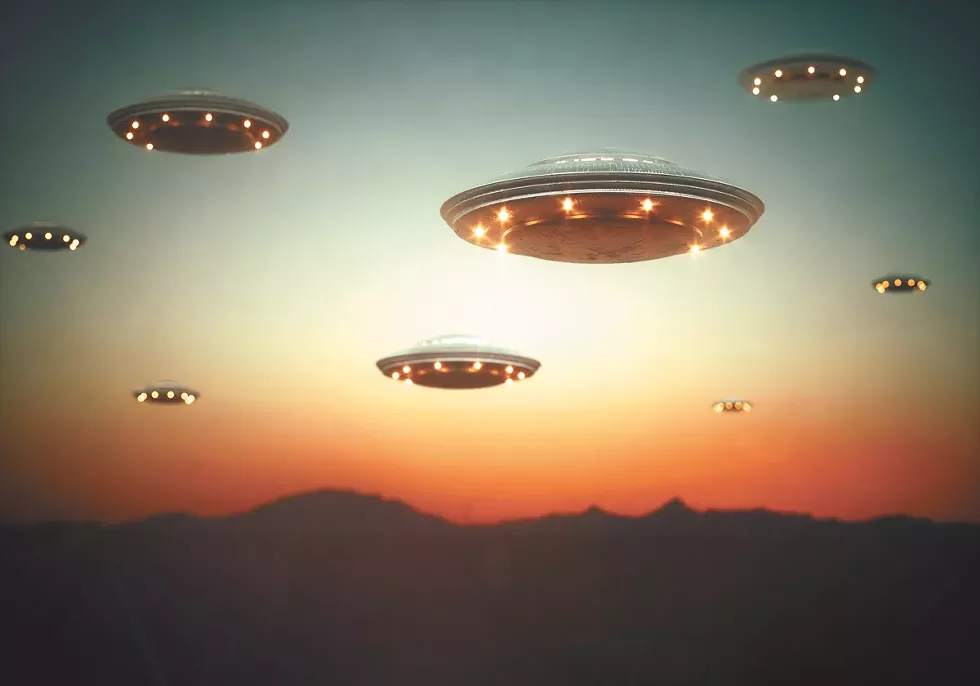
It was a beautiful early summer afternoon at about 9,500 feet overlooking Mount Rainier. "The sky and air were clear as crystal," Boise-based pilot Kenneth Arnold said of the conditions that day, June 24, 1947. Arnold, a fire control engineer who sold fire fighting equipment in the rural Western states, was flying out of Chehalis, Washington, with a final destination of Pendleton, Oregon. His trip had been delayed slightly when he was asked to help locate a military transport that had crashed into the side of Mount Rainier the previous winter.
Flying in his CallAir Model A, Arnold made a couple passes of the mountain, but was unable to see the downed transport. He was making one final pass of the area before heading to his next destination, Yakima, when a flash of light reflected off his plane. Startled, he checked to see if any other airplanes had snuck up on him. He didn't see anything until he looked out his window to the left. Just north of Mount Rainier were nine unusual looking aircraft flying south toward Mount Adams, moving at about 1,200 miles per hour, according to Arnold's estimate.
Later that day, Arnold told his colleagues and acquaintances about what he described as thin saucer-like aircraft without tails. Word got around, and the next day the June 25 edition of the East Oregonian ran a story of Arnold's sighting with the headline: "Impossible! Maybe, But Seein' Is Believin', Says Flier."
The story spread like wildfire and is credited with kicking off the UFO craze in the United States. Shortly after the story broke, eyewitness reports of "flying saucers" were everywhere. Famously, there was the "Roswell Incident" just a couple weeks after Arnold's sighting, which many UFO researchers and conspiracists believe to be a cover-up of a crashed alien spacecraft in New Mexico.
Fast forward to today, UFOs — or UAPs (unidentified aerial phenomenon) as they are being rebranded — might be more popular than they have ever been. A growing number of pilots and military personnel have come forward with their own stories of strange encounters in the sky. These stories have appeared with increasing frequency in the national media over the last few years. On May 16, 60 Minutes broadcasted an interview with former Navy pilots Dave Fravor and Alex Dietrich that detailed their eyewitness account of a UAP off the coast of San Diego, which they described as a white "Tic Tac" shaped object about the size of a 737. The object moved erratically, had no visible propulsion and was lightning fast. But Fravor and Dietrich are far from the only ones. Other military personnel have come forward about similar sightings. Some of the objects, like the Tic Tac, have even been recorded by sophisticated tracking systems. The U.S. military has verified the authenticity of some of these recordings, although they can't say exactly what they are. At least that's the conclusion of a new report issued on June 25 by the Department of National Intelligence.
Last year, wheels were put in motion on the UFO front. The government's secretive Advanced Aerospace Threat Identification Program was relaunched under a new name, the Unidentified Aerial Phenomena Task Force. It's mission is "to detect, analyze and catalog UAPs that could potentially pose a threat to U.S. national security," according to a Pentagon description. Also, as part of the federal government's $2.3 trillion spending package last year, lawmakers included an unusual provision. They wanted an unclassified report on what the government knows about UAPs from the Department of National Intelligence and the secretary of defense within 180 days.
Perhaps unsurprisingly, the report's findings were deemed "largely inconclusive." Definitively analyzing the reported incidents was a challenge for the department due to the technological limitations of military sensors and, admittedly, some of the stigma surrounding the topic within military and intelligence circles, the department says in its report.
The report analyzed 144 reports of these unidentified aerial phenomena between 2004 and 2021, but found that the limited data left most of them unexplained. Most reports detailed UAP near military activities or training areas (though that may be a collection bias, the report says). Only one of the reports was explained as a deflating balloon. However, 18 of the reported incidents appeared to show UAP demonstrating "advanced technology" in their movement or flight characteristics, the report says. It also says that UAP likely exist in one of five categories: "airborne clutter, natural atmospheric phenomena, [U.S. government] or industry developmental programs, foreign adversary systems, and a catchall 'other' bin." The report did not mention anything extraterrestrial.
Ultimately, the report laid the groundwork for future analysis of UAP with a long-term goal of increasing its data set through more reporting and collaboration with other agencies and eventually applying machine-learning algorithms to help determine their nature.
But for some in the UFOlogy community, much of the new report isn't really news. UFOlogist Peter Davenport, who is based in Eastern Washington, has already been collecting data on UFO/UAP incidents all over the world, and he's got a head start on the report by a few decades.
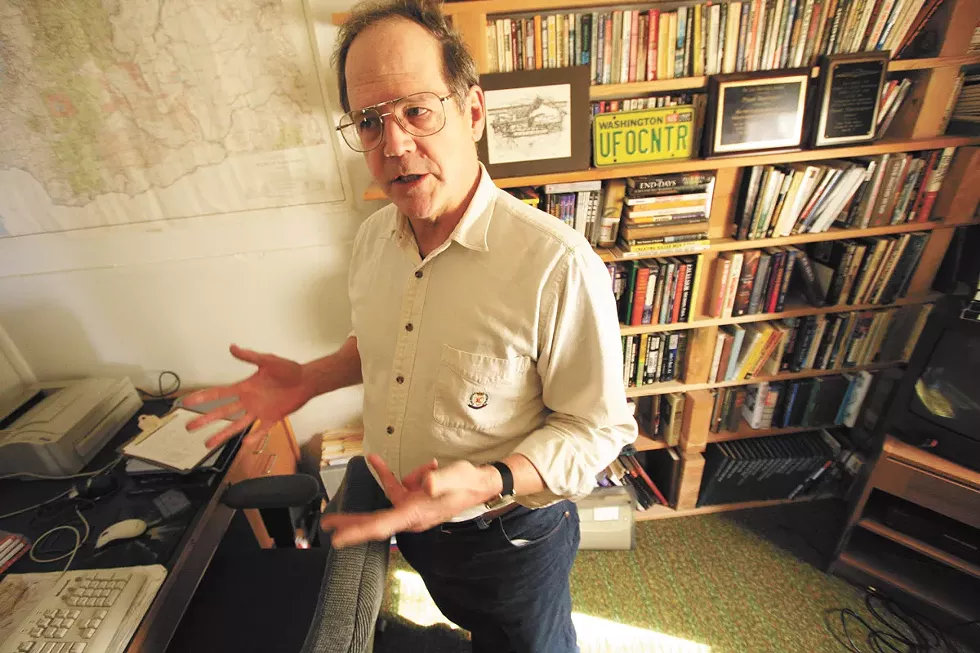
COUNTING THE ENCOUNTERS
Davenport's first brush with UFOs was at an outdoor cinema near the St. Louis Lambert International Airport back in the 1950s, he says. Just a child at the time, Davenport recalls there being a sudden disturbance in the cinema. People were getting out of their cars, slamming their doors, and pointing to the sky."I looked out the right side of our '53 Studebaker ... and there was an incredibly bright object, red, about the shape of a British rugby ball. ... It was illuminating the entire St. Louis airport like it was daylight," he recalls.
Out of nowhere, it rose up and went behind the screen of the theater within a couple of seconds and then disappeared. The incident, still vivid in his mind's eye more than 60 years later, is likely what led him to a career in UFOlogy, he says.
Davenport is a believer through and through. A devout Christian, trained scientist and businessman, the 76-year-old says there is little doubt what these unidentified flying objects are: Sophisticated, technological craft piloted by alien creatures.
"I think we're dealing with intelligent, highly developed, sentient creatures who, from time to time, come to this planet and visit us," he says from his home in the tiny town of Harrington, Washington, about an hour west of Spokane. "I'm fairly confident that we're being visited on a routine, consistent basis that's been going on for at least 100 years. I suspect these creatures have been aware of our presence for a long time."
Davenport has been running the National UFO Research Center website, nuforc.org, and hotline for 27 years. He has been an expert source for the L.A. Times, the New York Times and, obviously, the Inlander, and has been a regular guest on paranormal talk shows like Coast to Coast AM.
NUFORC was established in 1974 and has served as a repository of thousands of eyewitness accounts of UFO incidents dating back several decades from all over the world, detailing strange encounters with pretty much anything that could be described as extraterrestrial. Floating lights. Massive, silent pyramid structures. Long-limbed humanoids. Flying saucers. Before the internet, these reports had to be taken over a telephone hotline or submitted via mail to NUFORC, sometimes along with an illustration.
Davenport's path to NUFORC has been a winding one. He served in the Army as a Russian translator before studying biology at Stanford in the 1970s. Grad school took him to the University of Washington, where he continued a career in science and later founded the biotech company BioSyn in Seattle. He met NUFORC founder Bob Gribble in 1991 at a monthly UFO meeting hosted by the Washington chapter of the Mutual UFO Network. Gribble, who had been running the hotline for 20 years, was about to call it quits at the time though. Not wanting to see Gribble's hard work go to waste, Davenport took the reins in 1994.
By his own admission, the work is exhausting, and Davenport now finds himself in the same position as Gribble, looking for another impassioned investigator to take over. The job has not been easy, he says. The onslaught of reports keeps him busy all day long, and the frequent prank phone calls from "young people" has grown tiresome. But he's also become a prominent figure within the UFOlogy community.
In between questions, he cites examples of what he describes as credibly sourced eyewitness reports. There are reports from airline pilots, seminarians and law enforcement officers. Then there's the story of Travis Walton, an Arizona man who claimed to have been abducted by aliens in the 1970s in front of several witnesses.
Walton's book was later adapted into the 1993 sci-fi film Fire in the Sky. Davenport, who knows Walton on a personal basis, says that if his story is true, "then it is perhaps one of the leading candidates for being one of the most traumatic incidents I can think of."
On their way back from work in a pickup truck, Walton and his co-workers allegedly spotted a UFO off the side of the road. Walton got out of the truck to investigate and claimed that he was shot by a beam of light and brought into the craft. Walton was missing for more than five days after the alleged abduction and claims to have conscious memory of some of the events.
After so many years of cataloging these stories, Davenport has become good at deciphering between the sincere and the insincere. Walton's story is one of the former, he says.
"I freely admit, I don't like the thought of being anywhere near a UFO," Davenport says. "People argue that I'm dealing with the devil. Other people claim I'm dealing with angels. I take the assertion that we're dealing with both."
Despite his firm belief in extraterrestrials, Davenport, like many in the UFOlogy community, is skeptical of some of these cases.
"You develop a sixth sense. If a person doesn't want to give his name, or is glib and jolly about his UFO sighting, these are signs it's not a sincere report," he says. "People will say things they aren't willing to write down. It's a warning sign [that] it's not conclusive."
Davenport is also suspicious of the U.S. government, he says, which is why he's not particularly thrilled by the Department of National Intelligence's UAP report.
"I'd like to think we're going to get the truth, but I'm skeptical," Davenport said in the weeks leading up to the report's release. "If the government officials who control this information were forthright with us, they could have done it long ago."
There have been other instances of government disclosure on what people have described as UFOs, particularly in Roswell, but also during the "Phoenix Lights" incident in 1997. But in those cases, the answers weren't satisfying, at least not for the UFO community.
Public opinion has changed somewhat since then. People are more willing to believe today than ever before. About one-third of Americans believe that UFOs spotted are alien spacecraft, according to a Gallup poll from 2019. About half of all Americans believe there are species similar to humans in the universe, the same poll says.
Even if alien spacecraft or species similar to humans don't exist, the reports from military officers and other seemingly credible sources are hard to dismiss entirely. Even former President Barack Obama said in a recent interview that "there is footage and records of objects in the skies that we don't know exactly what they are."
"The American people are more willing to address the topic, particularly members of academia and people who have a lot to lose by being labeled a kook," Davenport says. "Airline pilots for a long time wouldn't talk about what they see in the cockpit. I've now taken seven reports from airline pilots from the cockpit since November."
The government report did not disclose the existence of extraterrestrials, but it did open up a starting point for people to have a serious conversation about the topic.
Kind of.
"I'd like to think we're going to get the truth, but I'm skeptical. If the government officials who control this information were forthright with us, they could have done it long ago."
GARBAGE IN, GARBAGE OUT
In the age of information, it's getting harder to distinguish the truth from lies. If we've learned anything about the internet over the last several years, it's that we're all highly susceptible to misinformation. We believe what we want to. Politics. News. Entertainment. Whatever. People will believe just about anything if it confirms their biggest hopes or their worst fears, and the potential existence of extraterrestrial intelligence can be both of those things.For most people, it's hard to say whether or not aliens exist. But no one can prove that they don't exist; therefore, perhaps they do. This "burden of proof" logical fallacy, as it is called, is used frequently by conspiracy theorists to put the onus on their skeptics. Straight-up liars like professional lunatic Alex Jones, host and creator of InfoWars, love to use this fallacy because it asks critics to prove a negative.
You can't prove that Dr. Anthony Fauci didn't help orchestrate the COVID-19 pandemic, so maybe he did. You can't prove that the corporate news media isn't covering up the truth of the virus to hide the globalist agenda, so maybe it is. You can't prove that the world leaders don't want to enslave the human population through vaccinations and implants, so maybe they do.
This kind of thinking runs rampant in the UFO community as well, says James Clarkson, a UFOlogist based out of Port Townsend, Washington. Clarkson, a self-described member of the "old guard," has watched the internet wreak havoc on the UFO community in recent years. The community has become increasingly intertwined with other, more fringe conspiracy communities like QAnon, he says.
It's the human version of "garbage in, garbage out," Clarkson says, referring to an old computer science concept. Essentially, bad data produces bad output.
"I think it's an extreme problem, not just for UFOlogy, but for politics and the country and the world. We have to get some ethically based search for the truth," he says. "It's not that we have too little information. It's that in some ways we have too much."
The days leading up to the government's UAP report created a "stampede of speculation" when, at the time, we didn't know anything, he says. Clarkson didn't find the report especially interesting. After all, it was unclassified information.
Clarkson is the former director for Washington state's chapter of the Mutual UFO Network, or MUFON, and has been investigating UFOs for three decades. As a science fiction fan, he loves to speculate "what the alien agenda might be." But Clarkson, who spent his professional career as an officer with the Aberdeen Police Department and as an investigator of child abuse and fraud, is very careful to note when he's wearing his UFO researcher's hat and when he's wearing the tin foil hat.
He has learned to approach UFOlogy like a criminal investigation.
"While you are going through an investigation, you are continually asking yourself the same question, 'What would a reasonable man conclude if he was confronted with the evidence in front of me right now?' You want to keep it reasonable, you want to keep it sensible," he says. "That's the problem I see in UFOlogy and the internet in general right now."
For every 10 UFO sightings you get, about six will have commonplace explanations, he says. Only one or two are what they call "true FOs," or truly unidentified flying objects, he says.
"Those are cases where you have highly credible witnesses, you have some kind of corroborating evidence and, hopefully, some facts that you can find," Clarkson says. "Witnesses who know everything worry me. I expect a witness to only know their part of it. A witness who can look me in the eye and say, 'I don't know, I didn't see that,' that impresses me."
Sometimes that means providing boring, "unpopular" answers that don't necessarily fit a media-driven entertainment narrative, he says.
DEBUNKING WITH CARE
This might also include UFO skeptics like Mick West, a Sacramento-based professional debunker who runs the website metabunk.org and who authored the book Escaping the Rabbit Hole: How to Debunk Conspiracy Theories Using Facts, Logic, and Respect. His website covers pretty much everything from COVID to chemtrails to that monstrous photo of a gigantic Joe and Jill Biden alongside a miniature Jimmy and Rosalynn Carter. But mostly, metabunk.org covers UFOs.For almost all of the high-profile sightings featured in the May 60 Minutes broadcast, West has a perfectly reasonable explanation. Using the mathematical and problem-solving skills he developed as a video game programmer, West often re-creates certain photographic effects that mimic what some UFO witnesses report having seen in the sky.
The first thing West looks for when debunking a sighting is the origin of the report: who took it, when it was taken, and where it was taken. From there, he tries to geolocate the sighting on a map to check off any environmental explanations. He also uses a handful of flight trackers that follow the signals of aircraft along their flight paths, which is a pretty common explanation for UFO sightings, he says.
Trying to convince the most ardent believers that these "sightings" might have simple explanations is not an easy task though. Talking with conspiracists requires a degree of patience and respect that can require swallowing a bit of pride, West says.
"It's really kind of the same way you deal with people who are in cults. Essentially, you've got people whose minds have been kind of brainwashed in a way, and they're starting to believe these various things that are very divergent from reality, and the way to help them is to keep them grounded in reality, even if it's just a little bit," he says. "You've got to have one toehold in reality. This is kind of like the first step in helping anybody, just to maintain effective communication."
All too often, people cut off their friends or relatives for expressing strange beliefs in conspiracies. But if you can find some common ground to communicate and bring them to a "stable state," you can begin to induce helpful information that might help them see the light, West says.
Like all things on metabunk.org, West takes a measured, scientific approach. He doesn't think the idea of UFOlogy or extraterrestrial life is crazy. He says the government report provides a good overview of what's happening in the skies, if you disregard the paranormal implications. The potential for life in our vast universe is there, he says. "We just haven't detected it yet."
"I don't think there's any good evidence that we're being visited now or that there's any evidence that we've been visited in the past. I wouldn't rule it out, but we just don't have good evidence."
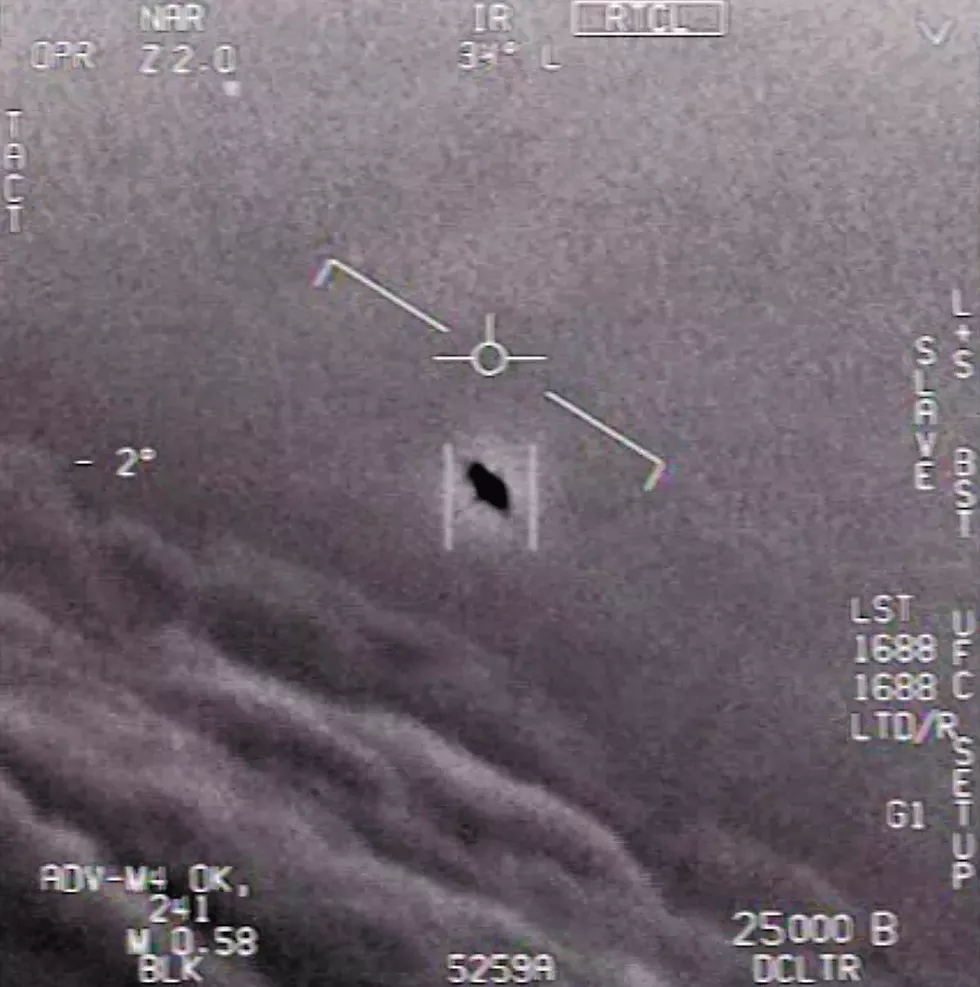
'THE MOST IMPORTANT QUESTION'
After his sighting near Mount Rainier, the Boise pilot Kenneth Arnold told famous broadcast journalist Edward R. Murrow that he believed the aircraft to be of extraterrestrial origin. More than 70 years later, and after leaps and bounds in culture and technology, we haven't come any closer to knowing the truth of that statement.The aliens, if they exist, are being strangely coy. But even the slightest chance that they do exist would be one of the biggest discoveries of all time.
"It's the most important question," according to Davenport. It cuts through to so many of our other philosophical, moral and religious questions, he says.
"It's the ultimate game changer," Clarkson says. "If we suddenly are confronted with the fact that the Earth is just one small place where there is 'intelligent life' and that there are many other worlds with life that might be more and less intelligent than we are, then my big hope is that it will force us to start seeing each other as fellow human beings and not as members of any particular nation or religion or race."
These ideas have been turned over countless times in popular culture in books, television, film, comics, again and again for decades now. The stories are endlessly fascinating to anyone with the smallest imagination. They provide an escape for those of us who hope for a bigger and brighter world, where the problems of today can be solved by the world of tomorrow.
Plague. War. Pollution. All of these things and more can be solved by the intervention or discovery of some unearthly technology. We want to believe that we can be saved.
But of course seeing is believing. And until we see evidence for ourselves, even a government-sanctioned report verifying the existence of extraterrestrial intelligence wouldn't convince everyone.
The truth is still out there. Supposedly... ♦



